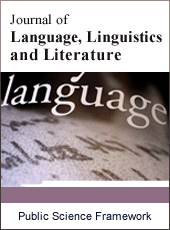Journal of Language, Linguistics and Literature
Articles Information
Journal of Language, Linguistics and Literature, Vol.2, No.5, Oct. 2016, Pub. Date: Dec. 27, 2016
Brown: the Patient of Obsessive-Compulsive Neurosis Caused by the Pressure of the “Superego”---An Analysis of “Young Goodman Brown” from the Freudianism Perspective
Pages: 40-45 Views: 5596 Downloads: 1461
[01]
Jianfu Liu, School of Foreign Languages, Jiangxi Normal University, Nanchang, China.
Nathaniel Hawthorne was one of the greatest Romanticist writers of 19th century America, his short fiction “Young Goodman Brown” had profound life philosophies hidden within, embodying the essence of psychoanalysis. This article aimed to explore the symptoms of obsessive-compulsive neurosis in Brown, and explained the reasons for his madness. Through the methodologies of psychoanalysis and pathology, this article found the result that Brown’s journey into the forest as his delusion stemming from the “id” of his unconscious self, he projected the crimes of this “id” onto the outside world, and ultimately became secluded from society as the final stage of his obsessive-compulsive neurosis. At last by analyzing Brown’s obsessive-compulsive neurosis symptoms and causes, this article made the conclusion that the fundamental cause of his tragedy was the devastation to human nature caused by the “Superego” under the strict Puritan dogma of the time, further illustrating Hawthorne’s severe critique towards Puritanism.
Psychoanalysis, Obsessive-Compulsive Neurosis, Pathology, Unconscious, Puritanism
[01]
Hu Xiaoying. An Analysis of “Young Goodman Brown” from Freud’s Point of View. College English. 2016 (6): 251-252.
[02]
Jambur Ananth. Chlorimipramine Therapy for Obsessive-Compulsive Neurosis. Br J Psychiatry. 1979 (135): 700-701.
[03]
John Ronan. “Young Goodman Brown” and the Matters. New England Quaterly. 2012 (85): 253-280.
[04]
Kutlubaev MAI. Symptoms of Obsessive Compulsive disorder in Neurological Diseases. Zh Nevrol Psikhiatr Im S S Korsakova. 2016 (116): 70-73.
[05]
Li Hongmei. An Analysis of the Inner Movement of Brown in “Young Goodman Brown” from Personality Structure. Universal Art. 2016 (6): 28.
[06]
Li Xinlin. An Analysis of the Characteristics of “Young Goodman Brown” from Freud’s Theory. Jourrnal of Jiaozuo Teachers College. 2011 (27): 19-21.
[07]
Marilyn Kurata. The Chime Dicken’s Re-Casting of “Young Goodman Brown”. American Notes and Quenes. 1983 (22): 10.
[08]
Meng Xueqing. Presentation of the Space: Concern over the Wholeness of Existence in “Young Goodman Brown”. Journal of Sichun University, 2015 (3): 11-121.
[09]
Nathaniel Hawthorne. Selected Short Stories of Nathaniel Hawthorne. Beijing: Foreign Language Press. 2012.
[10]
Richard Fredmore. “Young Goodman Brown”: Night Journey into the Forest. Journal of Analytical Psychology. 1977 (3): 250-257.
[11]
Tang Yin. An Analysis of Inner Tension between “Id” and “Superego” of “Young Goodman Brown”. Journal of Hubei Radio&Television University. 2012 (5): 71-72.
[12]
Sumant Khanna & S. M. Channabasavanna. Phenomenon of Obsession in Obsessive Compulsive Neurosis. Psychopathology. 1988 (50): 12-16.
[13]
S. Selina. Jamil. Carnivalesque Freedom in Hawthorne’s “Young Goodman Brown”. Explicator. 2007 (65): 143-145.
[14]
Tian Junwu. Study of Nathaniel Hawthorne’s Night Journey Narrative. Foreign Literature. 2012 (4): 112-119.
[15]
Yi Li, Freud and Psychoanalysis. Beijing: Foreign Language Teaching and Research Press. 2013.

ISSN Print: 2381-7054
ISSN Online: 2381-7062
Current Issue:
Vol. 6, Issue 1, March Submit a Manuscript Join Editorial Board Join Reviewer Team
ISSN Online: 2381-7062
Current Issue:
Vol. 6, Issue 1, March Submit a Manuscript Join Editorial Board Join Reviewer Team
| About This Journal |
| All Issues |
| Open Access |
| Indexing |
| Payment Information |
| Author Guidelines |
| Review Process |
| Publication Ethics |
| Editorial Board |
| Peer Reviewers |


